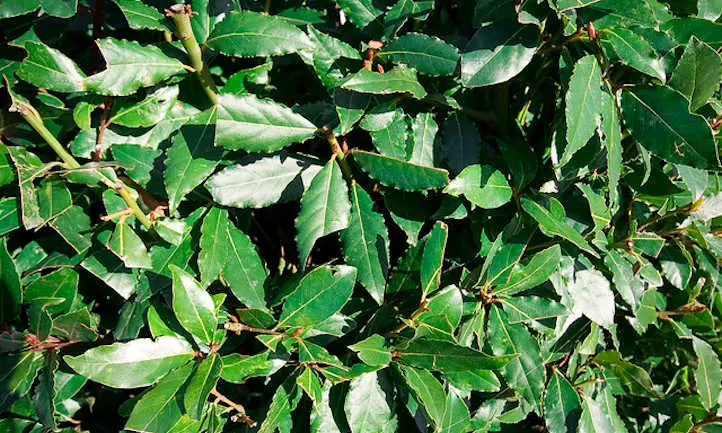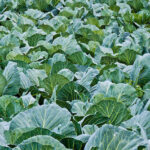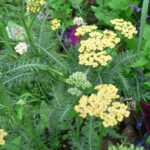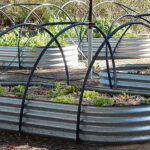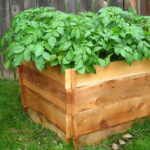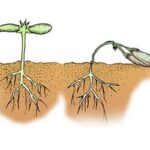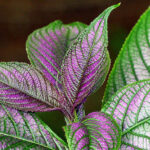Bay laurel is a beautiful evergreen tree. Since the bay tree is a slow grower, it’s also kept as an ornamental, especially in the form of topiary shapes. Bay laurels work extremely well for topiary use!.
This lovely evergreen is an ideal candidate for your yard as it has attractive foliage and is easy to maintain. Even better, it’s used as a spice in many cuisines. It’s often used in slow-cooking recipes like soups and stews, but is a major flavor note in rice dishes like jambalaya as well.
You’ll be surprised to learn that the elliptical-shaped leaves of this tree are dried and used as wraps for licorice. The items are then shipped across the world. In China, the leaf is also used in rice packaging to offer a faint aromatic note to the rice.
Whether container grown or in the ground, the tree can be an amazing addition to your landscape efforts. Not only that, but you’ll be able to use those leaves for their herbaceous flavor culinarily. What’s not to love?
Get A Bay Laurel Tree
Quick Care Guide
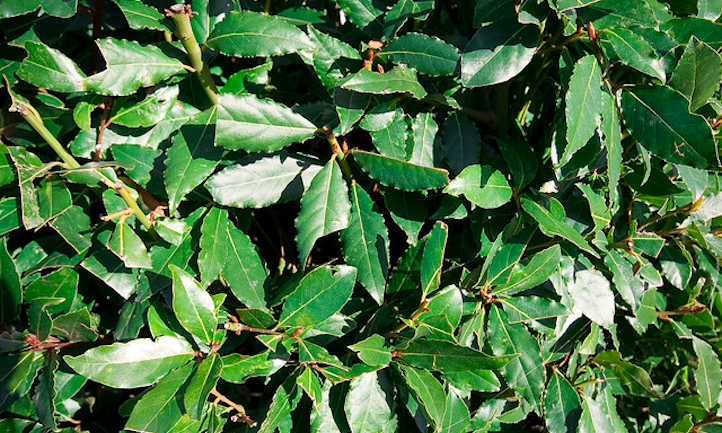 Bay laurel trees produce the sweet bay leaves we use for cooking. Source: juanantoniomosquera
Bay laurel trees produce the sweet bay leaves we use for cooking. Source: juanantoniomosquera| Common Name(s) | Sweet bay, bay laurel, true laurel, laurel, Grecian laurel, California bay laurel |
| Scientific Name | Laurus nobilis |
| Days to Harvest | Harvest individual leaves year-round |
| Light | Full sun to partial shade |
| Water: | Only when needed, do not overwater |
| Soil | Well-drained, with pH range between 5.5-7.5 |
| Fertilizer | Twice annually (early spring/early summer) |
| Pests | Bay sucker, scale insects, aphids, beetles |
| Diseases | Anthracnose, downy mildew, powdery mildew, phytophthora root rot |
All About Bay Laurel
 Bay leaves grow in pairs along their stems. Source: briweldon
Bay leaves grow in pairs along their stems. Source: briweldonLaurus nobilis, bay laurel originates in Mediterranean regions, but has become popularized worldwide. Laurus nobilis produces the famous bay leaf that is widely used as a spice. Other common names for the Laurus nobilis tree are sweet bay, bay laurel, true laurel, Grecian laurel, and laurel.
The laurel tree is a aromatic evergreen tree that grows smooth, glabrous dark green leaves. It belongs to the flowering plant family of Lauraceae. Container plants stay compact, usually less than 6 feet in height. Planted in the ground, it often reaches 20 or more feet tall.
Its leaves are dark green in color, glossy, and oval. They have a smooth leathery texture and are slightly thick to the touch. Apart from being used as a herb, the tree also grows gorgeous yellowish-green blooms in spring. Laurus nobilis is dioecious, meaning that the tree is not self-pollinating. You will need both a male and a female plant to get more than leaves and flowers.
If pollination between male and female Laurus nobilis plants occurs, the flowers on the female bay tree are followed by purplish-black single-seeded berries. Laurus nobilis has a widely-spreading root system, so it’s important to keep a safe distance when planting it near your home or other structures. The roots can easily penetrate leaky pipes, so avoid planting it near water or sewer lines.
The Laurus nobilis bay laurel tree can be cultivated as an ornamental plant or as a shade tree. Bay laurels are widely used to create attractive topiary in the form of erect stems, with box-shaped, ball-shaped or twisted crowns. One of the most popular shapes is known as the lollipop bay. But if you grow bay laurel naturally, it matures into a full-sized tree.
With the right care and maintenance, you can even grow a Laurus nobilis hedge, although it takes creative pruning to keep it low. The leaves are versatile and attractive, so much so that in ancient Greece, they were used as wreaths and woven as crowns by victors.
In cooking, bay is used to make bouquet garni – a bundle of leafy herbs used for cooking casseroles, soups, and stews. Single leaves can also be added directly into the cooking pot. They need to be removed prior to serving as the leaf remains woody and unappealing, but releases a lovely flavor to the liquid it’s cooked in.
In order to harvest bay leaves, the plants should be at least 2 years old. The leaves of the tree can then be used for culinary purposes to add a special aroma and taste. Older, larger leaves typically have more flavor than the younger leaves do.
Planting Bay Laurel
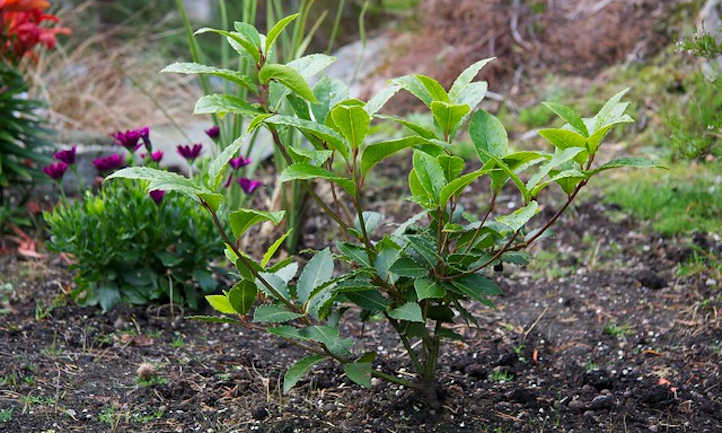 Bay is a slow-growing tree. This young sapling has years to go yet! Source: dan.kristiansen
Bay is a slow-growing tree. This young sapling has years to go yet! Source: dan.kristiansenA Laurus nobilis bay laurel plant can be easily grown in the southern United States. It requires a warmer, more Mediterranean-type climate, and doesn’t perform as well in colder regions.
In the United States, bare-root Laurus nobilis trees should be planted in the very late winter or early spring depending on your region. As the bay prefers warmer climates, gardeners in areas that get hard freezes should plant in containers indoors. You need to plant your tree when it’s still somewhat dormant, prior to it waking up and starting to produce new growth. This gives it the best chance to adapt to its new location.
Young trees tend to be susceptible to wind, whether hot or cold. Select a location where the tree has a windbreak nearby to keep it from being beaten up by the air!
Pick a location where your Laurus nobilis tree receives full sun year-round. While they can do well in partial shade locations, they grow their best with at least eight hours of sunlight a day.
Container-grown plants can be moved indoors or outdoors to suit the weather. If indoors, they will need to be in a location where they receive their daily dose of sunlight through a window. Alternately, you can set up a grow light to provide them with supplemental lighting. Use a pot that matches the size of the tree and its age. Keep it away from drafty areas or heating vents.
Your plant will either be bare-root, or in a pot. If it’s bare-root, make note of where the bag is tied around the trunk, as that’s the maximum depth to plant to. Potted trees should be planted no deeper than they were planted in the pot.
Before you plant Laurus nobilis, loosen and amend the soil where the tree will be located. It’s essential that it has good drainage, so soils that bake to a hard, less-permeable surface may need soil conditioners added to improve drainage. For a year-old sapling, loosen an area that’s at least 3 feet in diameter and at least 2-3 feet deep.
Once your soil is loose and amended with compost or other soil conditioners, make a mound of soil in the center of the hole. Set your bare-root tree on top of the mound, positioning the roots evenly around the mound. Backfill with amended soil.
Container grown plants will need a pot size that matches the age of the plant. While a very young plant can be in as small as a 5-gallon pot for the first 6 months or so, yearling or older plants need a much larger pot.
Bay Laurel Plant Care
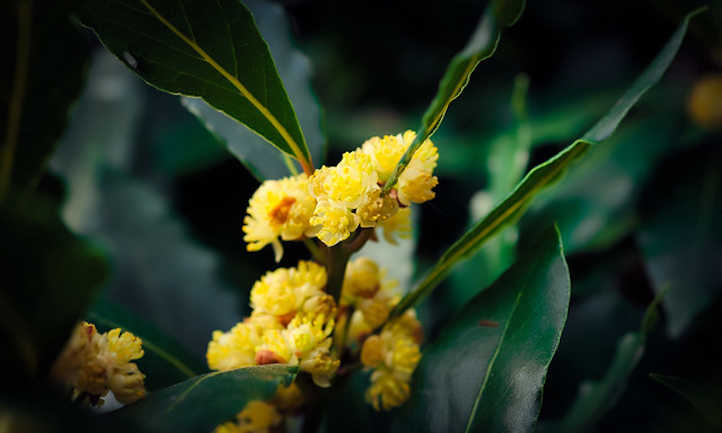 Laurus nobilis flowers can be stunningly beautiful when in full bloom. Source: Pascal Rey
Laurus nobilis flowers can be stunningly beautiful when in full bloom. Source: Pascal ReyBay laurel can be used as a screen or hedge plant, provided that there’s another windbreak nearby. Laurus nobilis can also be a great container-grown topiary plant. But how do you care for it? Let’s discuss that.
Sun and Temperature
8 hours of good sunlight is ideal for bay trees. They can survive in warmer climates with a bit of partial shade in the afternoon, but still need to have no less than 6 hours of full sun whenever possible.
USDA hardiness zones 8-10 are ideal for this plant. They perform well in temperatures from 45 degrees to 90 degrees, but their ideal growing temperature is 60-75 degrees.
While Laurus nobilis can survive in colder weather, it starts to have issues once the temperature drops below freezing. As a warmer climate evergreen, it’s not accustomed to long spells at freezing. When it hits 20 degrees Fahrenheit, your tree will start to suffer real damage. Those who live in climates in the sub-freezing range (as an example, people in the northeastern US such as New York) should plan on container-growing their bay and bringing it indoors for the winter.
Extreme heat can cause some issues as well. Temperatures that are consistently over 100 degrees can cause sunburn damage to the leaves, and soil dries out much more quickly. You’ll need to water more often and expect that part of the foliage may not be good for harvesting later.
Watering and Humidity
While the bay tree absolutely hates to have wet feet, it still needs to be watered. Ensure your soil drains off excess water well, and then provide about 1” of water per week. It’s best to water in the morning, and a slow gradual watering that can seep down into the soil around the roots is better than flooding at the base. A soaker hose does this extremely well, or simply turn your hose on a very low trickle.
As the temperature heats up, increase your watering frequency from one long, slow watering once a week to about twice a week. The soil will be losing lots of moisture during hotter weather. Mulch can slow soil moisture evaporation, but be careful not to put the mulch right against the trunk, as that can promote trunk rot. Keep about 6 inches between the mulch and the tree trunk.
A potted bay tree will need more frequent watering due to the smaller amount of soil it has to hold its moisture. In hot weather, watering daily is a good idea. During the rest of the year, a couple good waterings each week will be fine.
Before you water, stick your finger into the soil near the trunk, at least an inch or two deep if possible. If you feel dampness, you can skip watering for now and can check it again later.
Bay is tolerant of highly humid conditions, but performs best when the average humidity is around 40%.
Soil
This tree isn’t very picky about its soil. It can grow well in any soil type, whether it’s sandy soil, hard packed clay, or a nice loose loam. The only real requirement is that the soil must drain off excess water extremely well so that it doesn’t go soggy or muddy. Like many trees, this one is susceptible to root rot in soggy soils.
Soil pH is also not a major concern here. Anywhere from lightly acidic to lightly alkaline (5.5-7.5) is fine. Aim for neutral conditions as a baseline when you test your pH, and you’ll be fine.
Fertilizing
A slow-release granular fertilizer applied in the early spring, with a second dose in early summer, should be enough to feed your bay. Aim for a fertilizer that’s balanced, but if you don’t have that option one that’s high nitrogen should be fine. For liquid fertilizers, opt for a fish and kelp emulsion.
Pruning / Training
Laurus nobilis is a slow grower, which makes it particularly good for use as a topiary.
Begin by sterilizing your pruning shears with one part bleach mixed in 9 parts water. Keep that handy, because you’ll want to re-sterilize between cuts when possible.
While your tree is still mostly dormant at the end of winter, get your initial shaping and pruning done. As it puts out new leaf growth, you can occasionally snip off overly-long stems, but it’s best to let it go through the spring and then do delicate shaping towards the end of summer once it’s slowed down.
Since it can skyrocket up from the ground, keeping it trimmed down to a reasonable height should also be done in the late winter. Container-grown plants should be kept no taller than 6 feet to ensure they’re able to be brought indoors for the cold months.
Pinch off side shoots or suckers on the tree when they appear. This prevents you from having a bunch of odd branches protruding up from its base.
Bay Laurel Propagation
Propagation is generally through seed, but the seed takes an incredibly long time to get going. It’s not unknown for a seed to take upwards of six months to germinate, and that’s if it germinates at all. This species is not known for good germination rates.
For this species, it’s best to buy saplings and plant those. That spares all the waiting for the seed to sprout. However, there is one other alternative: softwood cuttings.
While they are not guaranteed to root, young and pliable green cuttings can be taken from a healthy branch tip. Select pieces that are at least 6-8” in length, and strip all of the leaves but the top two from your cutting. Dip the end in water, then rooting hormone, and plant it in a prepared pot which has equal parts of vermiculite, potting soil, and sand.
Place a plastic cover or bag over the top of the cutting. If using a bag, use sticks or pieces of stakes to keep the bag from resting on the cutting. This will help keep humidity around the plant. Place it on a seedling heating mat that’s set at 70 degrees to provide even and consistent warmth, and provide bright indirect lighting.
Once a month, check your seedlings to see if they’ve developed roots. Top growth isn’t really an indicator that they’ve taken root. Instead, gently tug on the top of the cutting to see if there’s resistance. If there is, it’s starting to develop roots.
Harvesting and Storing
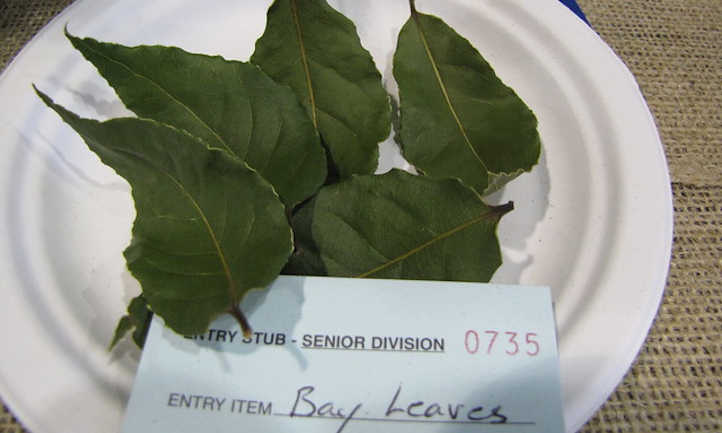 Once harvested, bay can be dried to preserve it for later use. Source: Starr
Once harvested, bay can be dried to preserve it for later use. Source: StarrBut what of the harvest? Let’s talk about methods to collect and store your sweet bay leaves.
Harvesting Bay Laurel
While you can harvest earlier, it’s best to wait for your bay to reach 2 years of age before doing your first harvest. This ensures it has ample time to grow and develop before you start raiding its foliage.
Handpick individual leaves or use a pair of sterile shears to snip off small clusters. It’s best to opt for older ones, as those have a better flavor than the young leaf.
Storing Bay Leaves
Store fresh bay wrapped in paper towels inside a plastic zipper bag in the refrigerator. It should be usable for up to two weeks.
To dry your leaves, either allow them to air dry in a cool and dry place, or use a dehydrator at its lowest heat setting.
Troubleshooting
 Unripe bay laurel berries will turn black when they ripen. Source: equipaje
Unripe bay laurel berries will turn black when they ripen. Source: equipajeNo matter how hard we try, we always encounter some issues as gardeners. Here’s how to deal with what may come your way!
Growing Problems
Over-watering can easily cause root rot. Leaves may yellow or turn brown, the tips may crisp up, and it may stop producing new foliage. As there’s no good treatment for root rot, it’s important to avoid it entirely. Be sure your soil drains off excess moisture well. If you’re unsure if it’s a good time to water, opt for less moisture rather than more. It will perform just fine in somewhat dry conditions.
Pests
The worst pest for your tree is the bay sucker. Sometimes called jumping plant lice, these pale brown, tiny sap suckers destroy your foliage and can actually successfully kill your tree. Leaf tissues will become thicker and yellow at first, but then will turn brown and fall off. Trim off infected branches or leaf material and destroy it (do not compost it). Use insecticidal soap to treat the leaf undersides and prevent further spread.
Many forms of scale insects are common on bay laurel. To prevent them from moving in, spray with horticultural oil. An application in February is ideal for preventing early spring scale. Spray again in the late fall, and once near Christmas. Use neem oil to treat outbreaks between the horticultural oil applications.
Aphids are also present, and they can spread downy mildew, a common disease. These can be wiped out with horticultural oil, neem oil, or insecticidal soap.
An assortment of brown beetles, including the Asiatic garden beetle, live on twigs and gnaw holes in leafy material. These half-inch long beetles can rapidly cause browning of leaves and can defoliate the branches. These can be hard to combat without chemical insecticides, but a strain of BT known as Bacillus thurigiensis galleriae works surprisingly well to eliminate both the beetles and their grubs.
Diseases
Anthracnose causes black leaf spots and curling, distorted leaves. This plant disease can be treated using botanical fungicides like neem oil.
Downy mildew, sometimes referred to as sooty mold, causes a greyish fungus to spread over the surface of leaves. It resembles a mold or mildew. Treat this using neem oil or a copper fungicide.
Powdery mildew can also occur. This is very similar to downy mildew in appearance, but lighter in color and dusty-looking. Neem oil is extremely effective against powdery mildew.
Finally, phytophthora root rots are common in bays that don’t have enough drainage. While there is no easy treatment for these, prevention is as simple as not overwatering. In addition, applying Trichoderma harzianum to your soil can help prevent rots. This soil-dwelling fungi works its way into the root system, helping to defend them from other soil-borne organisms. This mutual interdependency helps both your bay and the fungi to thrive, as your bay is more able to take in nutrients from the soil around it.
Frequently Asked Questions
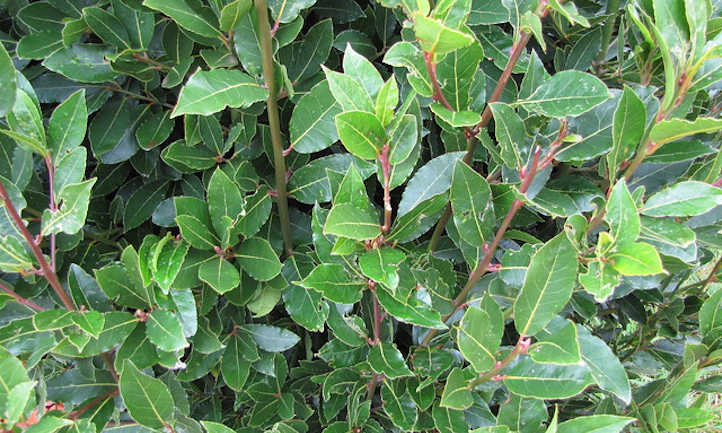 Laurus nobilis prefers a warm, Mediterranean-type climate. Source: Starr
Laurus nobilis prefers a warm, Mediterranean-type climate. Source: StarrQ: How tall do these trees grow?
A: Bay laurel trees can reach heights of 20-30 feet, but are often maintained at around 6 feet if grown in containers.
Q: Is bay laurel the same as a bay leaf?
A: Yes, both bay leaf and bay laurel are the same. The bay leaves come from the bay laurel tree.
Q: Are bay tree berries poisonous to dogs?
A: Yes, the berries can be toxic for dogs, horses, and cats. If eaten in large quantities, they can cause serious harm to your pets. The leaves aren’t safe either if consumed in large quantities.
Q: Can you use bay leaves straight from the tree?
A: Yes, the fresh bay leaves can be picked, washed, and used for culinary purposes.
Q: What is bay laurel used for?
A: It is used in medicine, and for flavoring varying savory dishes. It’s perfect in soups, flavoring creams for potato dishes, and baked pastas, as well as braised meats. In Greece, laurel wreaths were common in ancient times. You can make your own laurel wreaths if you have a bay tree source.
Q: Does bay laurel repel insects?
A: The oils in bay leaves deter cockroaches. Therefore, satchels of dried leaves, and plantings of bay laurel can keep the roaches out. It won’t kill them, though.
Q: Do bay leaves keep mice away?
A: Yes. Much like roaches, mice are deterred by plantings of bay laurel, and bay leaves.
Q: Does bay laurel have invasive roots?
A: While the tree itself is not classed as an invasive species, the roots can be aggressive and spread readily in the right conditions. Therefore, keep your plantings well away from natural resource areas and buildings.

